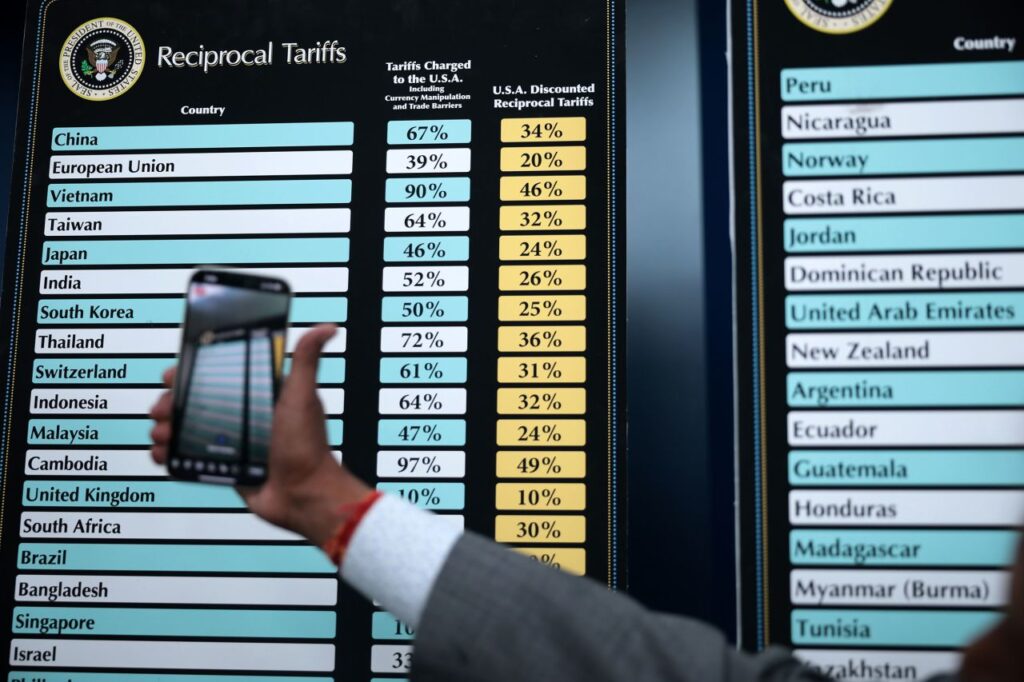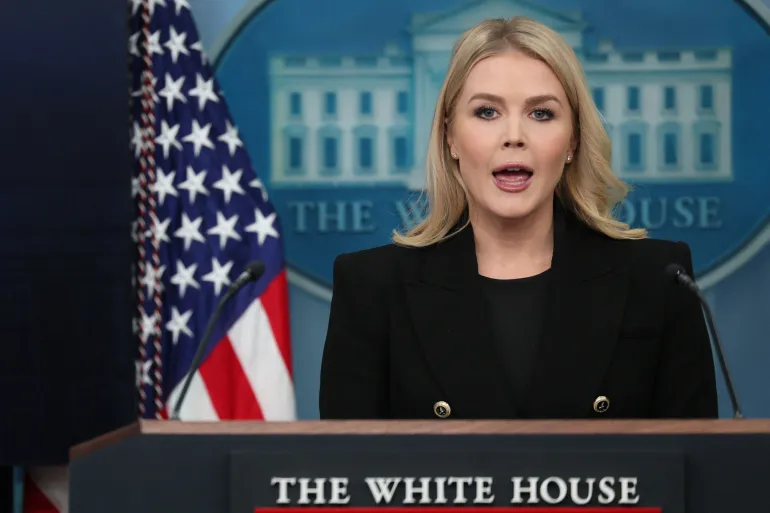US President, Donald Trump’s “reciprocal” tariffs on dozens of countries have come into effect.
The round of so-called “reciprocal” tariffs on imports to the US come as Trump’s punishing levies have shaken a global trading order that has persisted for decades, raised fears of recession and driven worldwide stocks sharply downward.
Despite rattled financial markets, threats of retaliation and some of President Donald Trump’s biggest supporters encouraging him to back off his signature economic policy, he hasn’t given in.
The reciprocal rates were calculated by dividing a country’s trade deficit with the US by its exports to the country and multiplying by 1/2.

They range from 11% to a whopping 50%. With the exemption of Mexico and Canada, America’s other top trading partners were hardly spared in this round.
The EU was hit with a 20% reciprocal tariff, China at 34%, Japan at 24%, Vietnam at 46% and South Korea at 25%.
These new rates come just days after Trump imposed a 10% universal tariff on all countries’ imports, aside from Mexico and Canada.
The 10% rate is not additive for countries on the reciprocal tariff list. For instance, Japan’s tariff rate increased by 14% on Wednesday given the 10% was already levied over the weekend.
Americans and people across the world are set to pay a steep price. Importers, not the countries Trump targeted, will pay the tariffs, and those costs often get passed onto wholesalers, retailers and ultimately consumers.
However, businesses abroad won’t be off the hook either, with Americans likely to source goods from countries with lower tariff rates.
Some Analysts have raised the chances of a global recession.
However, Morgan Stanley Analysts on Tuesday, April 8, 2025, said that the US would avoid recession – because they believed Trump would ultimately strike deals with countries to lower tariffs.
Also, Trump’s Chief Trade Adviser, Peter Navarro, told a news agency that he guaranteed the US economy would not plunge into a recession.
Despite dozens of countries offering to negotiate, it’s not clear that deals can be worked out quickly — if at all.
Trump and members of his administration have said that what they consider non-tariff trade barriers — which include currency manipulation, tax policies viewed as unfair and the use of sweatshop labor — are more important than tariffs.
That’s why they’ve rejected various nations’ offers to set their tariffs to 0% on US goods in exchange for the same treatment.
China Faces Astounding 104% Tariff
Meanwhile, China is faced with an astounding 104% tariff.
In February, Trump had initially imposed a 10% tariff on all Chinese goods, with no exceptions, tying it to the country’s alleged role in aiding illegal immigration and getting fentanyl into the US. Last month, he doubled those rates.
China was already set to see tariffs increase by 34% today, Wednesday, April 9, 2025, as part of Trump’s “reciprocal” tariffs package.
However, the US President tacked on another 50% after Beijing didn’t back off on its promise to impose 34% retaliatory tariffs on US goods by noon on Tuesday.
White House Press Secretary, Karoline Leavitt told reporters on Tuesday, “Countries like China, who have chosen to retaliate and try to double down on their mistreatment of American workers, are making a mistake.”

“President Trump has a spine of steel, and he will not break. The Chinese want to make a deal, they just don’t know how to do it.”
Karoline Leavitt
China has struck a defiant tone to Trump’s threat of additional tariffs.
Earlier Tuesday, China’s Commerce Ministry said it “firmly opposes” the additional 50% tariffs on Chinese imports, calling it “a mistake upon a mistake.”
The ministry vowed to escalate its retaliation on US exports.
China was America’s second largest source of imports last year, shipping a total of $439 billion worth of goods to the US, while the US exported $144 billion worth of goods to China.
The mutual tariffs threaten to hurt domestic industries and are poised to result in layoffs.
READ ALSO: Mahama’s Lean Gov’t on Track with OGM Discretionary Spending Cut



















